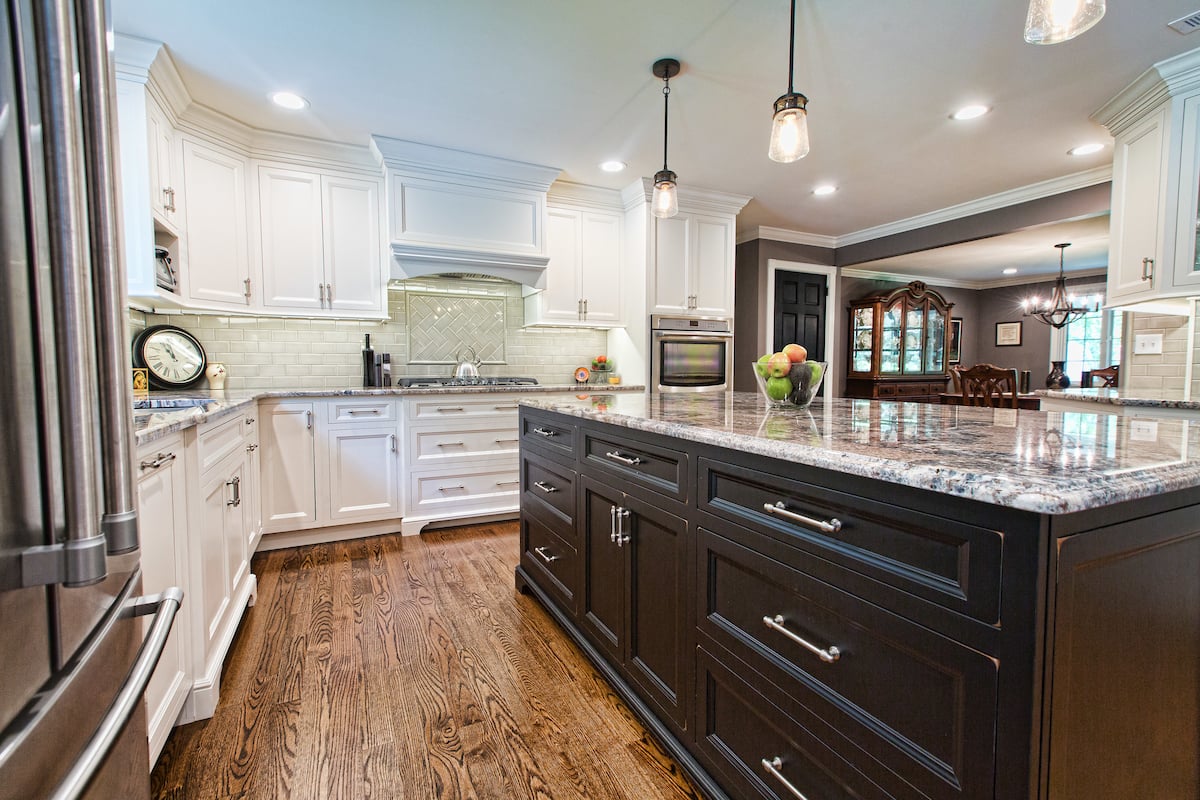Home remodeling can be an exciting and rewarding experience, but it can also be stressful and costly if not properly planned and budgeted.
Whether you're looking to update your kitchen, add an extra bedroom, or give your bathroom a much-needed facelift, having a clear understanding of the expenses associated with your project will help you make informed decisions, set realistic expectations, and avoid unexpected financial surprises down the line.
In this blog, we'll share some expert tips on how to estimate home remodeling costs, so you can turn your dream home into a reality without breaking the bank.
Determine Accurate Home Remodeling Cost Estimates in 5 Steps

Struggling to navigate through the overwhelming amount of information and templates online for your home remodeling project? We're here to help! Our goal is to provide you with accurate cost estimates.
Follow our step-by-step guide to determine the most precise estimate for your home remodel.
1. Get Clear on Your Goals
Getting clear on your goals is an essential first step in preparing for a home remodeling project. Before you start picking out paint colors or browsing through flooring samples, take some time to consider what you hope to achieve with your renovation.
Begin by asking yourself some key questions, such as:
- What specific problems do you want to solve or improvements do you want to make?
- Are you looking to create more space, improve functionality, or increase the value of your property?
- What areas of your home are you most dissatisfied with?
By answering these questions, you'll be able to establish a clear vision of what you want to achieve and prioritize your goals accordingly.
Once you have a set idea of your goals, it's important to communicate them clearly with your contractor. They can provide valuable insight and help you identify any potential challenges or limitations to achieving your desired outcome.
Having a shared understanding of your goals will also help ensure that everyone involved in the project is on the same page and working toward a common objective. By setting clear goals and communicating them effectively, you'll be well on your way to a successful and satisfying home remodeling project.
2. Know Your Budget
Setting a budget can help you prioritize your goals, identify areas where you may need to make trade-offs, and ensure you're making the most of your available resources. Without a clear understanding of how much money you're willing and able to spend, it can be easy to overspend or run out of funds before the project is complete.
When establishing your budget, it's important to consider all the costs associated with your renovation, including materials, labor, permits, and any unexpected expenses that may arise during the course of the project. Be sure to build in a cushion for contingencies, as unexpected issues can arise during any renovation project.
It’s also a good idea to speak with your contractor (more on that in step 3) about your budget so they can give you a more accurate estimate for your remodeling project.
Ultimately, knowing your home remodeling budget is essential to ensuring the project is a success. By setting a clear budget, you can create a beautiful, functional, and comfortable space that meets your needs and stays within your financial means.
3. Speak With a Contractor
Once you have your goals and budget figured out, working with a contractor is the next step.
A professional contractor can provide valuable insight and guidance on everything from design to budgeting to permitting requirements. They can also help you identify potential challenges or limitations to your project and suggest alternatives that can help you achieve your goals while staying within your budget.
4. Get a Second (or Third) Opinion
When selecting a contractor, it's important to choose someone who has experience in the type of renovation you're planning, as well as a track record of delivering high-quality work on time and within budget. For this reason, you may want to connect with a few different contractors so you can find the best fit.
Look for contractors who are licensed, insured, and have good reviews from past clients. Additionally, make sure the contractor you choose has good business practices and stands by them.
Did the contractor provide an estimated timeline for the project? Do you know how often you’ll meet with them during the remodel? Did the contractor mention anything about the team they’ll be working with? If not, consider exploring other options.
Remember, this is your home and you want to be confident in the selection of a contractor to work on it. If you think the first contractor you speak with is showing too many red flags, it’s time to find someone new.
5. Stick to Your Scope
It's easy to get carried away with ideas and start adding on more work as your home remodel progresses, but doing so can quickly lead to project delays and going over budget. That's why it's important to establish a clear scope of work from the outset and stick to it throughout the project.
A well-defined scope of work should include a detailed list of all the work to be performed, as well as any associated costs and timelines. Any changes or additions to the scope of work should be carefully evaluated and discussed with your contractor to determine their impact on the budget, timeline, and overall feasibility.
By setting clear boundaries and expectations, you can help ensure the project stays on track and that everyone involved understands their roles and responsibilities.
Home Remodeling Estimate Template
After you go through the above steps, creating a home remodel estimate template can be a helpful way to organize and track the costs associated with your renovation project.
To create a template, start by breaking down the project into individual tasks or components, such as demolition, plumbing, electrical work, flooring, and painting. Each of these tasks should be assigned a cost estimate based on your research and discussions with your contractor.
Next, create a spreadsheet or document that includes each task, its associated cost estimate, and a space to track actual expenses. You may also want to include a section for contingencies, as unexpected expenses can arise during any renovation project. Be sure to label your template clearly and save it in a place where it can be easily accessed and updated.
As you work with your contractor and begin the project, be sure to update your estimate template regularly to reflect any changes or adjustments to the project scope or budget. This will help you stay on top of costs and ensure you don't exceed your budget.
You may also want to include notes or comments on your template to provide additional context or reminders for yourself and your contractor.
Estimate the Cost of Your Dream Home
Although remodeling is a complex and often expensive undertaking, it can be a rewarding experience that transforms your house into your dream home. Still, even with proper planning, staying within your budget and navigating unexpected issues or scope changes can be challenging.
To ensure you accurately estimate your home remodeling costs and avoid financial surprises, contact the experts at Tilghman Builders. We’ll carefully consider your project budget, timeline, and design goals and work with you to make your dream a reality.
Request a free home renovation estimate today.




